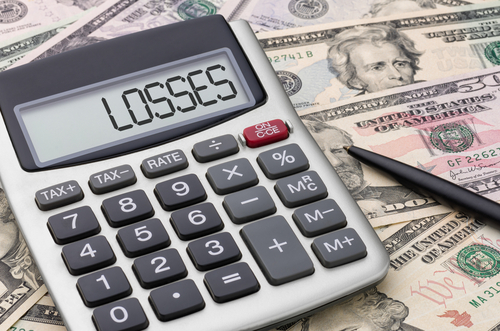For the average entrepreneur making a loss means cash is getting lower. The business is hemorrhaging. Blood is leaving the patient. In the start-up world it’s called the runway. How much runway have I got? Perhaps your personal savings are being used to fund those first few years and you’ve got a few months, weeks, or even a few days left! Runways run out, or do they?
I’ve examined the story of three loss makers to understand how you can make huge losses but still be worth billions. In fact all three added together amount to $248 billion worth of value. That’s right the stock market value of all three adds up to $248 billion.
They are Amazon at $198 billion, Salesforce at $48 billion and newly floated HubSpot at $1.7 billion.
A review of 12 key metrics tells a fascinating story. First a picture:

Now some observations, Amazon first:
- Last year Amazon sold $89 billion of stuff.
- It lost on a strictly GAAP (Generally Accepted Accounting Principles) $241 million.
- However like every other business, we have those pesky non-cash items that accountants love. First up – depreciation. We don’t actually write a check to depreciation but Amazon set aside $4.7 billion of depreciation (of course the idea behind depreciation is very real, because things really do wear out, become obsolete and you have to replace them one day).
- Next up on the non-cash front is stock compensation, an adjustment for all those stock/share incentive schemes you’ve used to keep or attract talent. That was $1.5 billion.
- I’ve then lumped a range of items into my accruals line which basically reflects the fact that costs and income don’t always follow a strictly cash journey, they follow an accruals basis.
- Then we come to a line I’ve called CAPEX. Basically the net impact of buying and selling capital stuff like buildings, equipment and servers. That was $5 billion right there.
At this point in the story we can strike an interesting sub total. How much cash did this $ 89 billion juggernaut actually generate in 2014? Answer line 7 – $1.5 billion (if your kind with roundings). So a loss maker can generate some cash.
But the story gets more interesting (well for me anyway) as you realize that another $4 billion of cash generation came from raising more money. So as long as you raise more money you can a loss maker into a $5.9 billion cash generator (line 9).
Finally this $241 million loss maker, generating $1.5 billion is worth $98 billion.
Now Salesforce observations:
- This $5.4 billion business lost $263 million last year (12 months to Jan 2015).
- But just like Amazon those pesky non-cash items added up to nearly $1.3 billion. So its loss really generated $1 billion in cash.
- It then spent $ 700m on capital stuff and $300m keeping the bankers and loan holders happy so it only generated just over $100m.
This company is worth $ 48 billion but hey who needs to make money?
And finally HubSpot the new kid on the block:
- Its just getting started but it’s learning the loss making trick really fast.
- It sold $116m of SaaS last year.
- It lost $ 49 million!
- Of course those non-cash items helped, adding back $22 million but that wasn’t enough to stop the hemorrhage.
- That’s where the IPO brilliantly executed came in, adding most of the $134 million into the coffers.
- So a happy ending with $124 million in the bank by Dec 31.
Market value? Today HubSpot is worth $1.68 billion.
Conclusion
Of course the stock market value of a public company is simply the value of each share multiplied by the number of shares issued. But what if the value of that individual share bears no relation to the fundamentals of the business. Where does that leave us?








